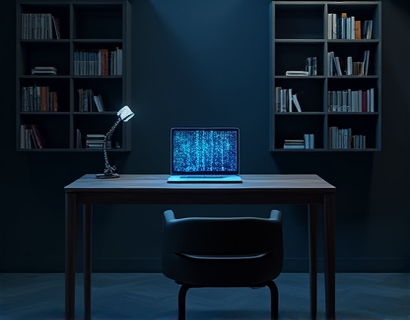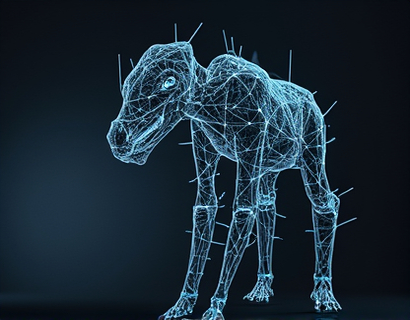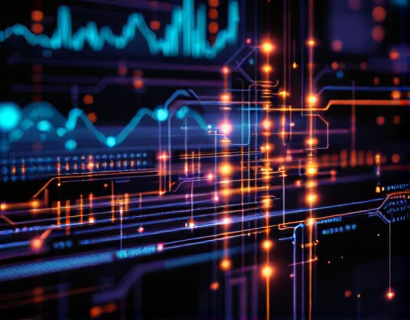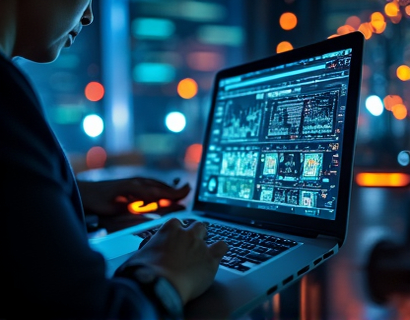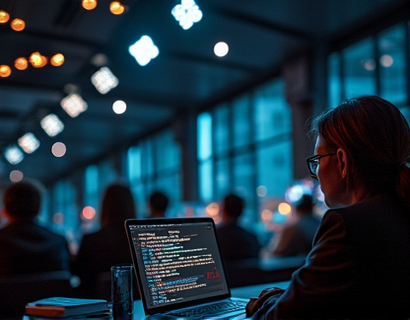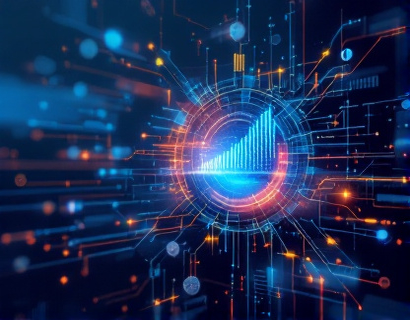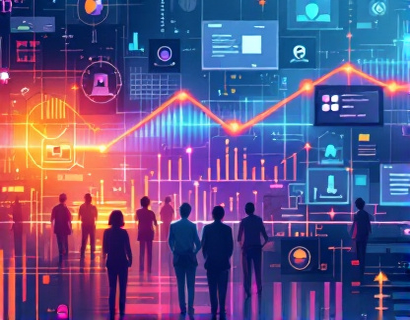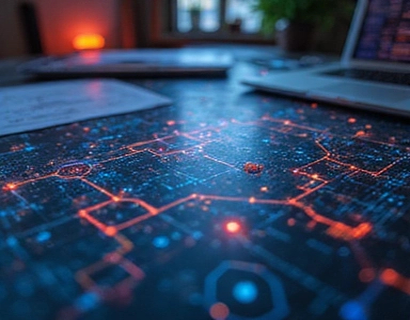Advanced AI Image Authentication: Ensuring Digital Content Integrity with Cutting-Edge Verification Technology
In an era where digital content is ubiquitous and image manipulation has become increasingly sophisticated, ensuring the authenticity and integrity of visual media is more crucial than ever. Advanced AI image authentication technology stands at the forefront of this challenge, providing robust solutions to detect AI-generated and altered images. This article delves into the intricacies of this cutting-edge verification technology, exploring its applications across various fields and its significance in maintaining digital trust.
The Need for Advanced Image Authentication
The rise of artificial intelligence has brought about unprecedented capabilities in image creation and manipulation. Tools that were once the domain of experts are now accessible to anyone with a computer, leading to a surge in AI-generated and altered images. This has profound implications for digital content integrity, affecting industries ranging from media and advertising to legal and educational sectors. The ability to discern authentic from fabricated images is no longer a niche concern but a fundamental requirement for professionals across diverse fields.
How AI Image Authentication Works
Advanced AI image authentication leverages machine learning algorithms and deep learning techniques to analyze images at a granular level. These systems are trained on vast datasets of both genuine and manipulated images, enabling them to identify subtle patterns and anomalies that indicate alteration or AI generation. Key components of this technology include:
- Feature extraction: Identifying and analyzing specific features within an image, such as textures, edges, and metadata.
- Pattern recognition: Detecting inconsistencies in lighting, shadows, and other visual elements that are often indicative of manipulation.
- Deep learning models: Utilizing neural networks to learn from extensive datasets and improve detection accuracy over time.
These advanced algorithms can detect a wide range of alterations, from minor adjustments to complete fabrications, providing a comprehensive assessment of an image's authenticity.
Applications Across Various Industries
The implications of AI image authentication extend far beyond the realm of technology, impacting numerous industries that rely heavily on visual content. Here’s how this technology is making a difference:
Digital Media and Content Creation
In the digital media landscape, the ability to verify the authenticity of images is paramount. Content creators, editors, and publishers can use AI authentication tools to ensure that the visual content they produce and distribute is trustworthy. This not only protects their reputation but also builds trust with their audience. For instance, news organizations can authenticate images used in reports, preventing the spread of misinformation and maintaining credibility.
Brand Management and Marketing
Brands are increasingly vulnerable to image manipulation, which can damage their reputation and erode consumer trust. AI image authentication provides a powerful tool for brand managers to verify the authenticity of user-generated content, advertisements, and marketing materials. By ensuring that the visual content associated with their brand is genuine, companies can safeguard their image and maintain consumer confidence.
Security Analysis
In the realm of security, the detection of manipulated images can have significant implications. Intelligence agencies, law enforcement, and military personnel rely on visual evidence to make critical decisions. AI authentication tools can help verify the authenticity of surveillance footage, photographs, and other visual data, enhancing the accuracy of security analyses and reducing the risk of misinterpretation.
Legal Compliance and Forensics
The legal sector benefits greatly from advanced image authentication. Courts and legal professionals require reliable visual evidence to support cases. AI authentication can provide a scientific basis for admitting or challenging the use of images in legal proceedings. Forensic experts can also employ these tools to investigate and analyze digital evidence, ensuring that the evidence presented is genuine and not tampered with.
Journalism and Media Integrity
Journalists face unique challenges in an age where deepfakes and sophisticated image editing tools can create highly convincing fictions. AI image authentication empowers journalists to verify the authenticity of visual evidence, from photographs to video clips. This is crucial for maintaining journalistic integrity and ensuring that the information presented to the public is accurate and trustworthy.
Education and Academic Research
In educational settings and academic research, the integrity of visual materials is essential for learning and discovery. AI authentication tools can help educators and researchers verify the authenticity of images used in presentations, publications, and educational resources. This ensures that students and scholars are working with reliable data, fostering a culture of accuracy and integrity in academic work.
Benefits of Advanced AI Image Authentication
The adoption of advanced AI image authentication technology offers numerous benefits across various sectors:
Enhanced Trust and Credibility
By ensuring the authenticity of visual content, organizations can build and maintain trust with their audience. Whether it’s a news outlet, a brand, or a research institution, the ability to verify images enhances credibility and fosters a positive reputation.
Improved Decision-Making
Accurate visual information is crucial for informed decision-making. AI authentication tools provide professionals with reliable data, enabling them to make better-informed choices in areas such as security, marketing, and legal proceedings.
Reduced Risk of Misinformation
In an era where misinformation can spread rapidly, AI image authentication plays a vital role in mitigating this risk. By detecting and flagging manipulated images, these tools help prevent the dissemination of false information, contributing to a more informed and trustworthy digital environment.
Compliance and Legal Protection
For organizations operating in regulated industries, compliance with legal standards is non-negotiable. AI authentication tools can help ensure that visual evidence meets legal requirements, providing a safeguard against potential legal issues related to the use of manipulated images.
Challenges and Considerations
While the benefits of AI image authentication are clear, there are also challenges and considerations to keep in mind:
Technical Complexity
The implementation of advanced AI authentication technology requires technical expertise and resources. Organizations must invest in skilled personnel or partner with technology providers to integrate these tools effectively.
False Positives and Negatives
No system is infallible, and AI authentication tools can occasionally produce false positives or negatives. It’s essential to use these tools as part of a broader verification process, combining them with human judgment and additional checks when necessary.
Privacy Concerns
The use of AI authentication tools may raise privacy concerns, especially when dealing with personal or sensitive images. Organizations must ensure that they comply with privacy laws and regulations, handling visual data responsibly and ethically.
Future Trends in AI Image Authentication
The field of AI image authentication is rapidly evolving, with ongoing advancements promising even more sophisticated and reliable tools:
Improved Detection Algorithms
As AI technology advances, detection algorithms will become more refined, capable of identifying even the most subtle forms of manipulation. This will further enhance the accuracy and reliability of image authentication.
Integration with Other Technologies
Future solutions may integrate AI image authentication with other technologies, such as blockchain and digital watermarking, to create comprehensive systems for verifying and securing visual content.
User-Friendly Interfaces
To broaden adoption, developers are focusing on creating user-friendly interfaces that make AI authentication tools accessible to a wider audience, including those without extensive technical expertise.
Conclusion
Advanced AI image authentication represents a significant leap forward in ensuring the integrity of digital content. By providing robust tools to detect AI-generated and altered images, this technology empowers professionals across various fields to navigate the complexities of image manipulation and AI creation. As the digital landscape continues to evolve, the importance of reliable visual content verification will only grow, making AI authentication an indispensable asset for maintaining trust and integrity in the digital age.





